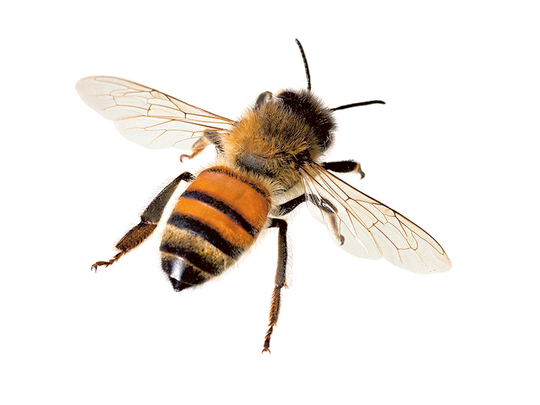
Washington: The bumblebee brain is puny, at least compared with the massive and fatty organ locked in your skull. At about 0.0002 per cent the volume of yours, bee brains are close in size to the seeds stuck on a hamburger bun. Thinking about insect brains in terms of size alone, however, is a trap. The intelligence of sesame-brained bugs should not be underestimated.
A study reported in the journal PLOS Biology, for instance, takes bee smarts in a surprising direction: Scientists from the Queen Mary University of London suggest that the “insects possess the essential cognitive elements for cultural transmission,” as they wrote in their new paper.
It is possible to teach a single bee a new trick, in other words, and a different bee can learn that behaviour from her peer.
That ability is not the only ace found up the clever bee’s sleeves. A recent experiment published in the journal Science, for instance, suggested that bees have their own version of optimism, as The Washington Post reported. Bees are also capable of an intricate form of communication called a waggle dance, with which they signal the location of nearby food. Every 75 milliseconds a waggle lasts, roughly speaking, indicates to other honeybees that a nectar source is an additional 330 feet further from the colony.
It has long been understood that some animals can teach their peers to perform new tasks. But the most famous examples involve stereotypically brainy critters, like primates or ravens: Japanese macaques show other monkeys how to wash sweet potatoes in streams. A certain group of chimps knows to fish for insects by prodding termite mounds with sticks, nibbled into brushes for maximum scoopage.
In their paper, the researchers demonstrate for the first time that a new skill can pass from bee to bee. To that end, they had to teach bumblebees to do something strange, a task the insects would not know how to perform in nature. The scientists turned to a “coiled-string test”, similar to other tests used previously in animal cognition research.
During the test, a bee needed to extract a blue disc, hidden beneath a clear Plexiglas table, by tugging on a string attached to the puck. These bees had an incentive. The blue disc mimicked a flower, to which the scientists added a tasty drop of sugar water in its centre.
When left to their own devices, however, zero out of 50 bees could figure out how to pull the disc out from under the table. (Given a second chance, two out of 25 managed to figure it out, but they were sluggish tuggers.)
So the scientists trained a batch of bees in several steps. First they familiarised the animals with the flower mimic, leaving it out in the open. The researchers then tucked the disc progressively further under the table, until the only way for the bee to reach the sugar water would be to yank on the disc’s string.
The scientists successfully trained 23 of 40 bees. (It took about 5-and-a-quarter hours per bee.) Of the 23 pulling bees, three were selected as demonstrators. The scientists put an untrained bee in a separate cage, and let her watch the demonstrator. Out of these bees, 15 in 25 figured out how to pull on the string.
Once trained bees were allowed to interact with their colonies, knowledge of the string-pulling behaviour spread. In two colonies, the researchers recorded the pulling behaviour at four degrees of social separation. In other words, bee D learnt to pull the string from bee C, who learnt from bee B, who learnt from bee A.
The takeaway, to hear the scientists tell it, is that “cultural transmission does not require the high cognitive sophistication specific to humans, nor is it a distinctive feature of humans.” Despite our flashcards and our SAT-prep books, we should not feel special in our ability to learn.












